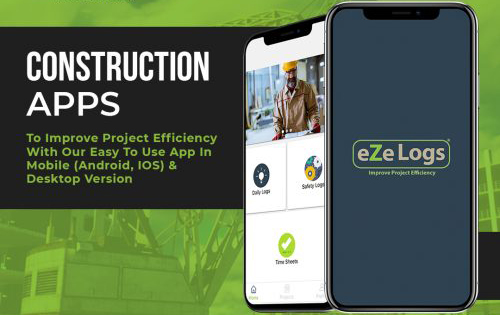Collaboration software refers to digital tools and platforms that enable people to work together on a project, regardless of their physical location. These solutions offer real-time communication, file sharing, task tracking, and other features designed to make collaboration simpler and more efficient.
Collaboration is paramount in construction projects since they involve numerous stakeholders such as architects, contractors, engineers and subcontractors. Each brings their unique skillsets to the table but must be integrated for successful completion of the job. Collaboration keeps everyone on the same page and working towards a common objective – ultimately leading to improved outcomes.

Collaboration software offers several advantages to construction projects, such as improved communication and coordination, enhanced project management, streamlined document management, increased efficiency and productivity, and better risk management. By taking advantage of these advantages, construction projects can be completed more quickly, cost-effectively, with higher levels of quality control.
Key Takeaways
- Collaboration software enables people to work together on a project, regardless of their physical location.
- Collaboration is paramount in construction projects and can lead to improved outcomes.
- Collaboration software offers several advantages to construction projects, such as improved communication and coordination, enhanced project management, streamlined document management, increased efficiency and productivity, and better risk management.
- Improved communication and coordination in construction projects can lead to faster decision-making, fewer errors, and decreased risk of delays.
- Enhanced project management through collaboration software can increase efficiency and resource allocation, keep stakeholders informed and in sync, and help identify and address issues quickly.
- Streamlined document management with collaboration software can increase productivity, improve accuracy, and reduce costs.
- Increased efficiency and productivity through collaboration software can lead to faster project completion, cost savings, and improved quality.
- Better risk management through collaboration software can lead to reduced costs, improved safety, and greater project success.
Use the software to manage the whole Collaboration process
Improved Communication and Coordination
Communication issues are prevalent in construction projects due to their multiple stakeholders who may be located across different locations. Communication breakdowns can cause delays, misunderstandings and errors which can prove costly and time-consuming to rectify.
Collaboration software offers a solution to these challenges by offering a centralized hub for communication and collaboration. Teams can use instant messaging or video conferencing to stay in real-time contact regardless of their geographical location, while project managers can use collaboration software to track progress, assign tasks, and monitor deadlines. By centralizing all communication, stakeholders remain informed and on-board throughout the project.
Better communication and coordination in construction projects can have several advantages, such as faster decision-making, fewer errors, and a decreased risk of delays. By ensuring all stakeholders are on the same page with collaboration software, it helps reduce misunderstandings or conflicts which could stall progress on a project.
Better communication and coordination enhance work quality because everyone is working towards an identical objective. Ultimately, improved communication and coordination allow construction projects to be completed on schedule and within budget.
Enhanced Project Management
Project management in construction projects can be a complex endeavor, as there are so many tasks, deadlines and stakeholders to keep track of. The sheer scale of the venture may make it impossible to keep tabs on everything at once – leading to delays, mistakes and cost overruns.
Collaboration software enhances project management by offering tools and features that help managers stay organized. For instance, project management software can serve as a central location to track tasks, deadlines, and milestones; it sends notifications when tasks are due and provides real-time updates on project progress so managers can quickly identify and address issues.
Effective project management offers several advantages in construction projects, such as increased efficiency and resource allocation. A centralized location for project management keeps stakeholders informed and in sync, decreasing the likelihood of delays or miscommunications. Collaboration software makes identifying issues quickly possible – helping avoid costly errors or rework.
Ultimately, improved project management enables construction projects to be completed on schedule, within budget, and with high-quality standards.
Streamlined Document Management
Construction projects often necessitate managing an array of documents, such as contracts, blueprints and specifications. Keeping these organized and accessible can be a hassle which may lead to confusion or mistakes in the data entry.
Collaboration software simplifies document management by offering a central location to store and access documents. Stakeholders can upload and share documents in real time, enabling team members to view the most up-to-date version of a document from anywhere. Moreover, collaboration software offers tools for document tracking and version control so that everyone always works from the most up-to-date document.
Streamlined document management offers several advantages in construction projects, such as increased productivity, improved accuracy and reduced costs. By having a central location for document storage, stakeholders save time searching for documents which reduce the risk of errors or delays. Using collaboration software for document management reduces physical storage requirements, which saves on storage expenses.
Increased Efficiency and Productivity
Efficiency and productivity are paramount in construction projects as they directly impact timeline, cost, and quality. Unfortunately, many construction endeavors involve a high degree of complexity which may lead to inefficiencies and lower productivity levels.
Collaboration software enhances efficiency and productivity by offering tools that simplify tasks and workflows. For instance, stakeholders can utilize collaboration software to manage tasks, share information, and monitor progress – saving them time from manual coordination tasks. Furthermore, real-time updates on project status enable stakeholders to quickly identify and address any issues that may arise.

Increased efficiency and productivity in construction projects can have several advantages, such as faster project completion, cost savings, and improved quality. By using collaboration software to boost efficiency and productivity, stakeholders can save time on manual coordination while completing the project faster and more cost-effectively.
By minimizing delays or errors during project execution, stakeholders can improve project quality for better outcomes. Ultimately, increased efficiency and productivity help construction projects are completed on schedule, within budget, and with high levels of quality.
Better Risk Management
Construction projects entail a high degree of risk due to weather conditions, accidents and unforeseen events that can impact timeline, cost and quality. Accurately identifying and managing these potential issues is often difficult; failing to do so may result in delays, errors and cost overruns.
Collaboration software assists with risk management by providing tools and features that enable stakeholders to identify, monitor, and mitigate potential hazards. For instance, they can use it for tracking potential threats and creating mitigation plans. Furthermore, real-time updates on project progress enable stakeholders to quickly detect and address any issues that may arise.
Better risk management has numerous advantages for construction projects, such as reduced costs, improved safety and greater project success. By identifying and addressing potential hazards early on in the process, stakeholders can avoid costly errors or rework.
Monitoring risks throughout the duration of a project helps stakeholders ensure it stays on track, decreasing delays or errors. Better risk management enables construction projects to be completed on schedule and within budget with high levels of safety and quality.
The Bottom Line
Collaboration software offers several advantages for construction projects, such as improved communication and coordination, better project management, streamlined document management, increased efficiency and productivity, and better risk management. By using collaboration software, stakeholders can work more efficiently, reduce errors and delays, and complete projects faster while spending less money overall.
In today’s fast-paced construction industry, collaboration software is essential for staying competitive and completing successful projects. By using collaboration software, stakeholders can improve communication and coordination, streamline project management, automate document management, boost efficiency and productivity, as well as better manage risk.
Therefore it’s essential that construction projects consider collaboration software an integral part of their plan; invest in proper tools and training so you can maximize its advantages; this will lead to better outcomes, reduce costs, and increase customer satisfaction levels – ultimately leading to lower customer complaints!


